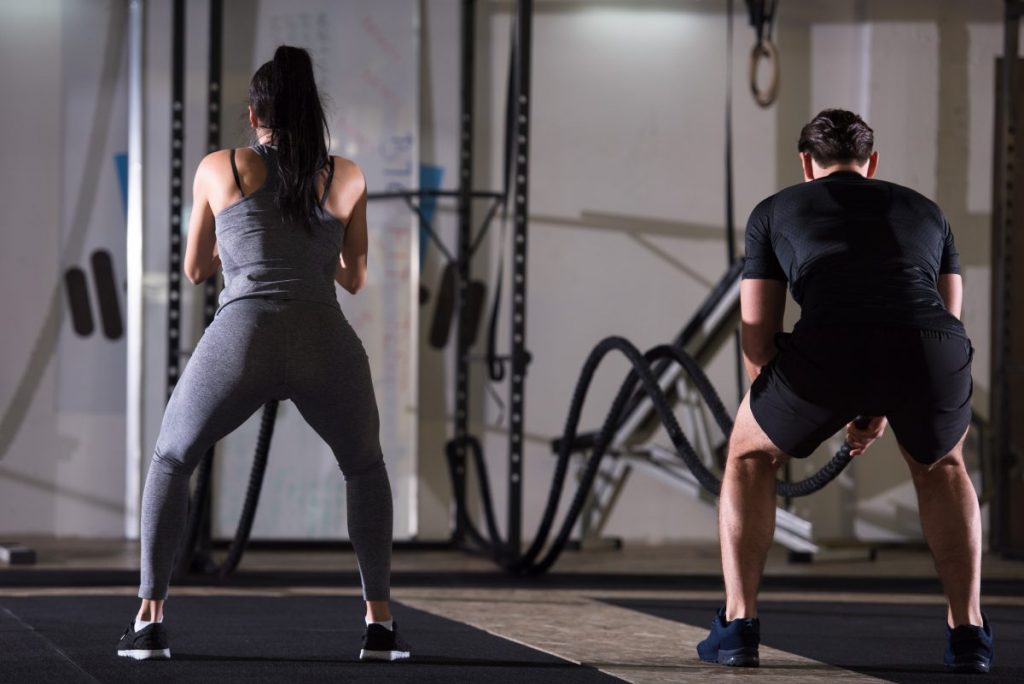Functional Fitness: Working Out for Real Life Situations
Functional fitness may be among the latest buzzwords in gyms these days, but for good reason. It’s about training your body to handle real-life situations.
Yesterday you had a great workout at the gym. You’re bench-pressing more weight than ever before, and pulling enough weight on the seated rowing machine to try out for the Olympic sculling team.
Today, you lift a 25kg suitcase to carry it downstairs — and throw your back out. What happened? In all likelihood, you’re not paying enough attention to your functional fitness. You might be toned, tight, and ready for the beach, but are you ready to lift your toddler out of his car seat or hoist the spring-water bottle onto the dispenser at work?
Functional fitness and functional exercise are the latest gym trends. They focus on building a body capable of doing real-life activities in real-life positions, not just lifting a certain amount of weight in an idealised posture created by a gym machine.
Making muscles work together
The key to functional exercise is integration. It’s about teaching all the muscles to work together rather than isolating them to work independently.
So what’s an example of a functional exercise? Think of a bent-over row; not the kind of row you do on a seated machine, but the kind you do leaning over a bench, holding the weight in one hand with your arm hanging straight down, and then pulling the weight up as your elbow points to the ceiling, finishing with your upper arm parallel to the ground.
This is an exercise that will build the muscles of the back, the shoulders, the arms, and because of it’s nature, will really work your whole body.
Compare that motion to a carpenter bending over a piece of wood or a nurse bending over a bed to transfer a patient. Anyone doing a bent-over row will find a carryover in things you do in normal life.
Contrast that with the seated row: You’re sitting in a chair with your chest pressed against pads, and you pull two levers back. You may be strengthening certain muscles, but your body’s not learning anything, because you don’t have to activate your core stabiliser muscles or the stabilisers of your arms and shoulders. The machine’s doing it for you.
In functional fitness, most of the time, you should be standing on your own two feet and supporting your own weight when you lift anything.

Control and Balance your body
In fact, to get started with functional fitness, you might want to forget about the weights entirely at first. Most people can’t even control their own body weight! Try right now – can you do a one-legged squat without falling over?
Generally speaking, a person could lie down on a leg-press machine and press 500 pounds, but they don’t have the muscular control for a one-legged squat because they don’t have the stability or the muscles working together. That’s why, when we walk downstairs or reach up to get something out of a high cabinet, a lot of us have pain.
Popular tools that promote functional exercise are things like stability balls and the “wobble board,” both of which force you to work your core to keep your body balanced while you’re lifting a weight.
Function follows Form
So should you abandon the weight machines at the gym for a program that’s all about free weights and balance? Not necessarily.
If there are isolated weaknesses, they’ll cause a detriment in functional movement. If you don’t address integration, strong muscles get stronger and the weak ones stay weak, and you create a pattern of compensation. If you blend the two together, functional exercises teach isolated muscles how to work together.
Jumping into functional exercise may startle some people used to working on machines alone: It’s a lot harder! Functional exercise is much more neurologically demanding than machine exercises.
You can’t do functional exercise with the same levels of intensity and short rest periods as machine exercise. And unlike traditional weightlifting on machines, with functional exercise, if you ‘train to failure’ [until muscle fatigue], you train to fail. Instead, your set ends when you can no longer perform the exercise with perfect form.
Like the sound of Functional Fitness?
Finding a trainer with a background in functional exercise shouldn’t be hard – most gyms now have them; along with functional fitness specialised areas.
Try it out, and mix up your workout routine!